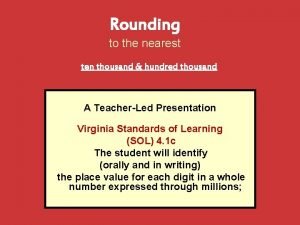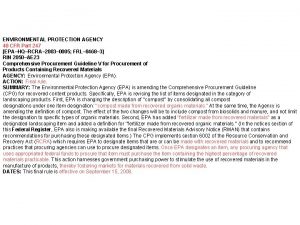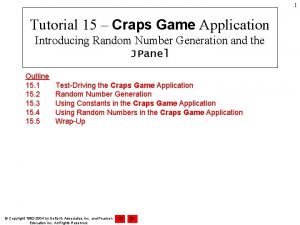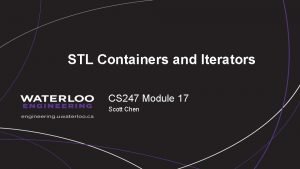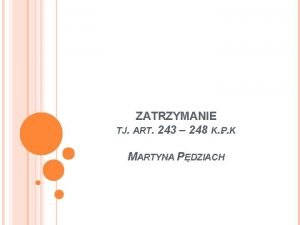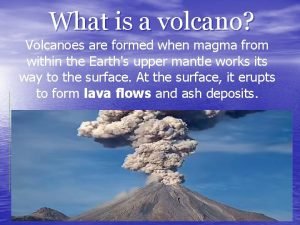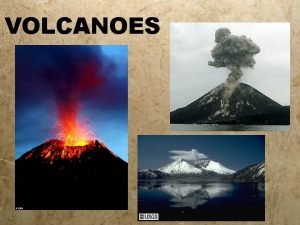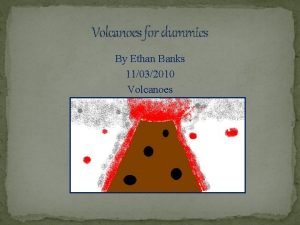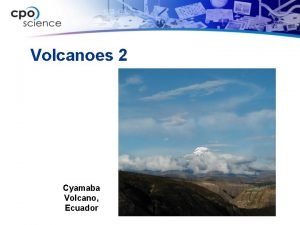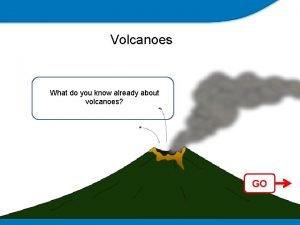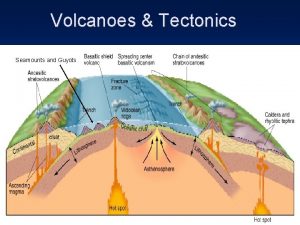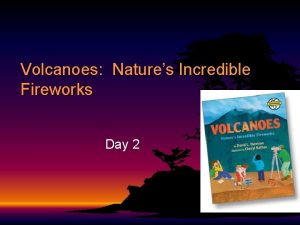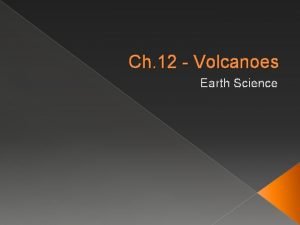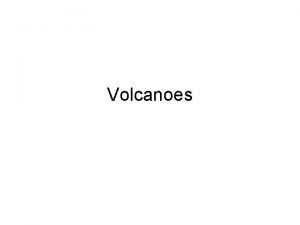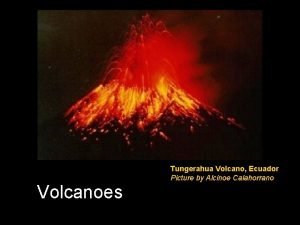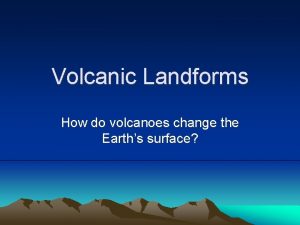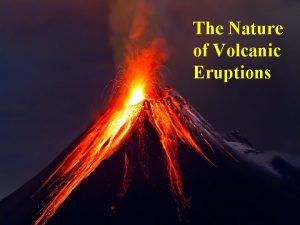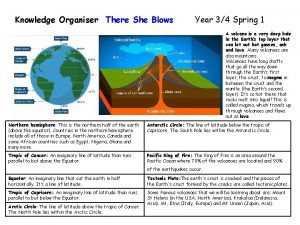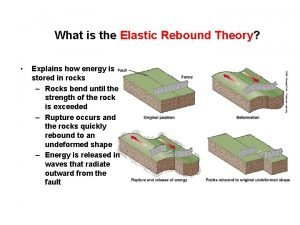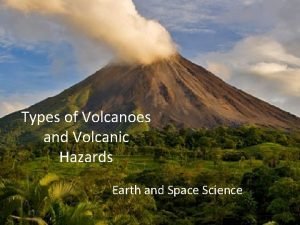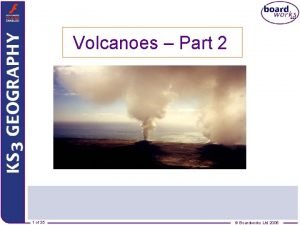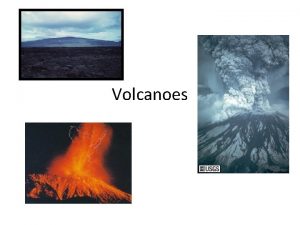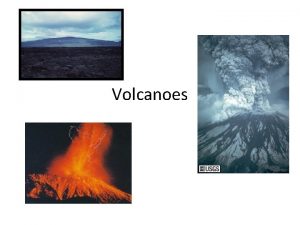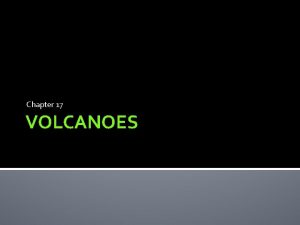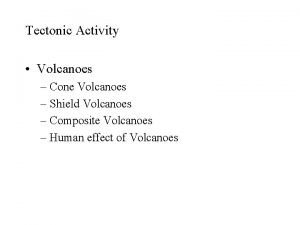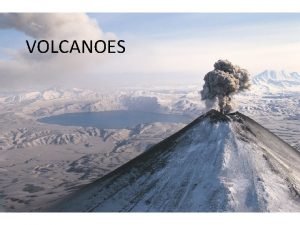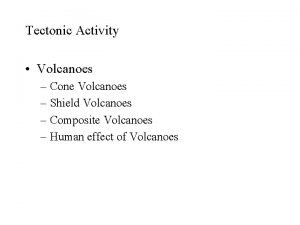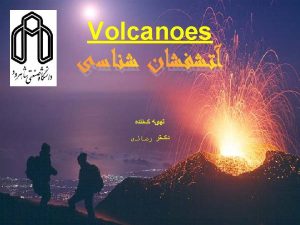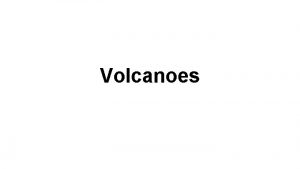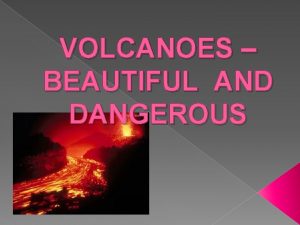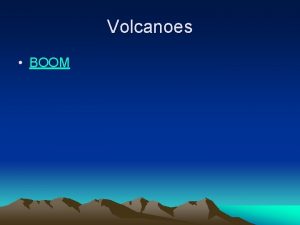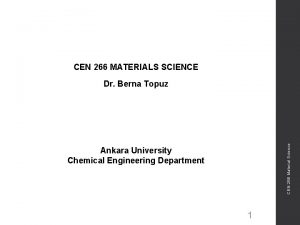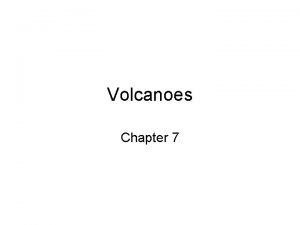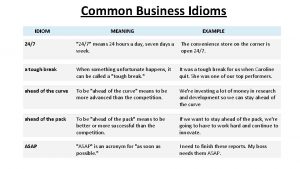Volcanoes Chapter 9 Pages 247 266 Questions 1






































- Slides: 38

Volcanoes

Chapter 9 • Pages: 247 -266 • Questions: 1 -7, 12, 19, 21 - 24

Volcanoes are associated with plate boundaries and hot spots

What do you remember about oceanic and continental crust? • Oceanic crust: – Composition? • Continental crust: – Composition?

What do you remember about oceanic and continental crust? • Oceanic crust: – Lower in silicon and oxygen – Higher in magnesium and iron • Continental crust: – Higher in Si and O – Lower in Mg and Fe

Who cares about the composition? Composition determines the explosivity of a volcano

Volcanic rock names are based on the composition Basalt Andesite Rhyolite Lowest % of silicon and oxygen Intermediate % of silicon and oxygen Highest % of silicon and oxygen Oceanic crust Mixture of oceanic and continental crust Continental crust Divergent plate boundaries Subduction zones: Ring of and hot spots under Fire (Cascadia subduction oceanic crust (Hawaii) zone) Hot spot under continental crust (Yellowstone)

Magma or lava? Within the crust On the Earth’s surface

The more silicate tetrahedrons in a lava, the more explosive the volcano. Which lava contains the higher percentage silicon and oxygen? Rhyolitic or andesitic lavas

Why?

Viscosity • Resistance to flow Which test tube contains the fluid with high viscosity? Left? Right?

Viscosity: resistance to flow • Lavas with higher percentage of silicon and oxygen have a high viscosity-pasty • Lavas with a lower percentage of silicon and oxygen have a low viscosity-fluid

Rhyolitic lava is associated with continental crust Rhyolite is cooled from pasty or thick lavas.

Andesitic lava is a combination of oceanic and continental crusts Andesite is cooled from pasty or thick lavas.

Rhyolitic andesitic lavas produce pyroclastic debris

Basaltic lava is associated with oceanic crust Basalt is cooled from fluid lava.

Basaltic eruptions produce lava flows Pahoehoe flows: smooth, ropey surface

What type of lava is produced at each plate boundary or hot spot?

Hot Spots • The type of lava produced depends on hot spot location • Under oceanic crust? • Under continental crust?

Tectonic setting of Hawaii? Hot spot under oceanic crust

Hot spot under oceanic crust • Stationary plume under oceanic crust • Hot plume acts like a Bunsen burner • Melts oceanic crust • Material from the mantle is also added

As the Pacific plate moves over the hot spot, a chain of islands form.

Lava fountains Hawaii? Basalt Aa flows: blocky, jagged, slow moving flows Shield volcanoes are associated with basaltic lava flows.

Type of lava produced? • Basalt • Fluid- low viscosity

What other tectonic setting would produce basaltic lava flows?

Subduction zone: stratovolcanoes

Steep at summit, less steep at base Composite Volcano: subduction zones Built over a long period of time Can reach over 14000 feet

Mt. St. Helens versus Kiliauea • • Subduction zone Stratovolcano Andesitic lava (pasty) Violent eruptions – Pyroclastic debris • Hot spot under oceanic crust • Shield volcano • Basaltic lava (fluid) – Lava flows

Mt. St. Helens: before the 1980 eruption Bulge: plug that is pushed out by magma within the conduit.

Kilauea eruption

Caldera Formation: enormous eruption in a short period of time Rhyolitic lava composition

Size Comparison of Volcanic Landforms

How is magma produced?

Decompression Melting

Decompression Melting Decrease pressure, lower melting temperature

Addition of volatiles lowers melting temperature

Adding water, lowers the rock’s melting temperature.

Gases drive volcanic eruptions
 Printed pages vs web pages
Printed pages vs web pages Chapter 8 earthquakes and volcanoes
Chapter 8 earthquakes and volcanoes Qr266
Qr266 Brinclhof
Brinclhof Round 683 492 to the nearest hundred thousand
Round 683 492 to the nearest hundred thousand Round 598 500 to the nearest ten thousand
Round 598 500 to the nearest ten thousand E 266
E 266 Money 247
Money 247 Usf employee assistance program
Usf employee assistance program 562-247-8422
562-247-8422 562-247-8422
562-247-8422 Cs 247
Cs 247 40 cfr 247
40 cfr 247 Craps tutorial app
Craps tutorial app Uml module
Uml module 145 in en yakın yüzlüğü
145 in en yakın yüzlüğü Yoursafezone 247
Yoursafezone 247 Module 1. stl sequential containers
Module 1. stl sequential containers Art. 243 kpk
Art. 243 kpk Econ 247
Econ 247 How do volcanoes work
How do volcanoes work How are volcanoes classified?
How are volcanoes classified? Paboeboe
Paboeboe Where do most volcanoes occur
Where do most volcanoes occur Extreme earth
Extreme earth What do you already know about volcanoes
What do you already know about volcanoes Three main ways volcanoes are created
Three main ways volcanoes are created Volcanoes nature's incredible fireworks
Volcanoes nature's incredible fireworks Explain the theory of plate tectonics.
Explain the theory of plate tectonics. How are volcanoes formed
How are volcanoes formed Volcanic belts form along _____.
Volcanic belts form along _____. Active volcanoes map
Active volcanoes map Laccolith
Laccolith How do volcanoes erupt
How do volcanoes erupt Volcanoes knowledge organiser
Volcanoes knowledge organiser How volcanoes form
How volcanoes form Types of volcanoes
Types of volcanoes Ring of fire volcanoes
Ring of fire volcanoes Magma chamber
Magma chamber





